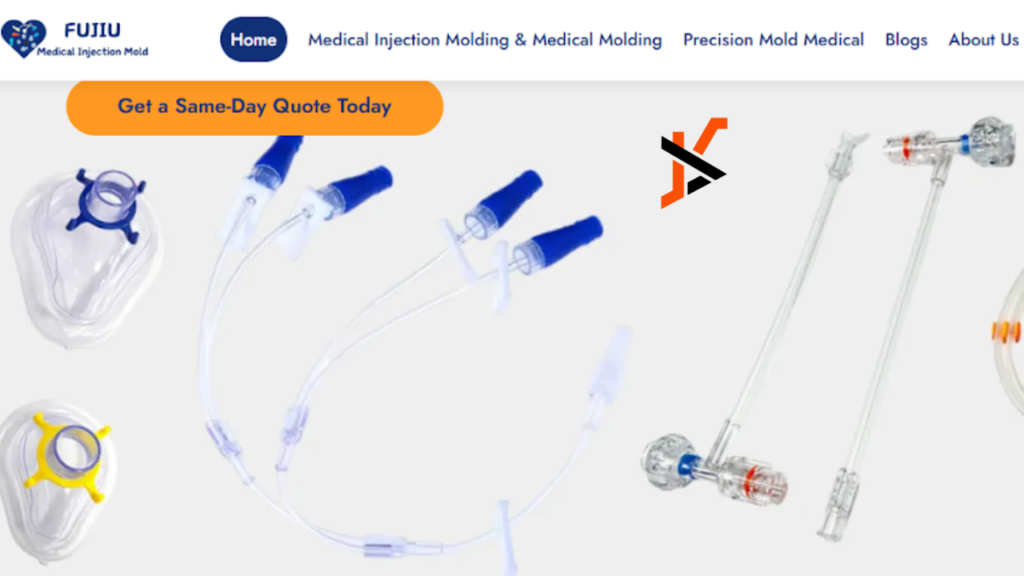Quality control in Precision Mold Medical is essential to ensure that molds used in medical device manufacturing meet the highest standards of safety, functionality, and reliability. Given the critical nature of medical devices, such as implants, surgical tools, and diagnostic equipment, ensuring that each mold is free from defects and can withstand the rigors of medical use is of paramount importance. Below, we explore the critical components of quality control in the precision molding process, including testing and inspection.
Precision Mold Testing
Precision mold testing is a crucial part of the quality control process in Medical Injection Molding, as it verifies that the molded components meet the rigorous standards required for medical applications. Testing ensures that the molds produce parts that are durable, reliable, and biocompatible, and are able to perform under real-world conditions.
- Durability Testing:
Molds used for medical devices must be able to withstand repeated use without degradation. Durability testing simulates the conditions the mold will be subjected to during production. It includes testing for resistance to wear, pressure, temperature fluctuations, and mechanical stress. For instance, molds used for high-volume medical device production need to be tested for their ability to retain tight tolerances and shape even after thousands or even millions of cycles.
This testing is especially critical for molds that are used to manufacture components like implants or prosthetics, where even a minor defect could lead to catastrophic results. Ensuring that molds retain their precision over time allows manufacturers to produce consistently high-quality products. - Chemical Resistance Testing:
Medical devices are often exposed to harsh chemicals, cleaning agents, and solvents during sterilization processes. Molds must be able to withstand exposure to these substances without degradation. Precision mold testing includes evaluating the chemical resistance of the mold material to ensure it can endure without affecting the structural integrity of the molded part. This is especially important for molds used to produce devices that need to be sterile, such as surgical instruments or implants. - Sterilization Compatibility:
Sterilization is a key aspect of medical device manufacturing. The mold itself must be tested for compatibility with common sterilization methods, including autoclaving, gamma radiation, and ethylene oxide gas. Molds used in medical molding must not only allow for the easy sterilization of the final product but should also resist any degradation from the sterilization process. Failure to meet sterilization compatibility can result in mold defects, compromising the safety of medical devices. - Biocompatibility Testing:
For molds used in creating components that will come into direct contact with the human body, such as implants or catheters, biocompatibility testing is essential. This testing ensures that the mold materials are non-toxic and will not trigger an adverse immune response when in contact with human tissue. Biocompatibility testing is mandated by regulatory authorities like the FDA to ensure patient safety.
Precision Mold Inspection
Mold inspection is an integral part of the quality control process in Precision Mold Medical. The goal of mold inspection is to ensure that the mold meets the design specifications and medical standards. This includes checking the mold’s dimensions, surface quality, and overall functionality. Inspection plays a critical role in identifying defects or irregularities in the mold before production begins.
- Design Specifications Verification:
The first step in mold inspection is to verify that the mold matches the original design specifications. Medical molds need to meet highly precise dimensional tolerances, often in the micrometer range. The inspection process uses advanced measurement systems such as Coordinate Measuring Machines (CMM) and laser scanning systems to check the mold’s accuracy. These systems ensure that the mold’s cavity, walls, and other critical features are within the required tolerances. - Surface Quality Inspection:
The surface finish of the mold cavity directly affects the quality of the molded part. For medical devices, a smooth, flawless surface is critical to prevent defects such as scratches or burrs, which could affect the functionality or safety of the final product. Surface inspections often involve visual checks, as well as using profilometers or microscopes to assess the texture and finish. - Dimensional and Geometric Inspection:
Given the complexity of medical devices, molds often have intricate geometric shapes that must be produced to exacting standards. Molds are subject to dimensional inspection using high-precision instruments. This process checks the mold’s geometry, including internal features like undercuts, draft angles, and thin walls. Even the smallest variation can cause significant issues in medical device production, so the inspection process ensures that the mold can consistently produce parts that meet the specified geometry. - Automated Quality Checks:
To ensure the highest level of precision, many manufacturers use automated inspection systems to perform mold inspections. These systems use robotics, vision systems, and AI algorithms to detect defects in real-time. Automated systems can scan the mold for defects with extreme accuracy, reducing human error and improving overall efficiency. These systems can also check for common defects like flash, sink marks, or warping that could compromise the quality of the molded part. - Compliance with Medical Standards:
Precision mold inspection ensures that the mold complies with medical industry standards such as ISO 13485 (Quality management systems for medical devices), ISO 9001, and FDA regulations. Compliance ensures that the mold not only meets quality and safety standards but also adheres to regulatory requirements, enabling manufacturers to produce medical devices that can be sold in global markets. - Functional Testing of Molds:
In addition to visual and dimensional inspection, functional testing of the mold is carried out to check if the mold performs as expected under normal operating conditions. This includes ensuring that the mold fills properly during injection, that there are no leaks, and that the material is able to flow through the mold to create the intended part. Functional tests also evaluate whether the mold can withstand the temperature and pressure during the injection molding process without deforming or failing.

